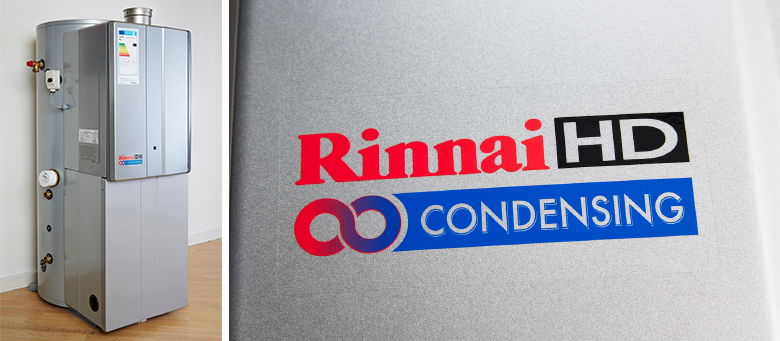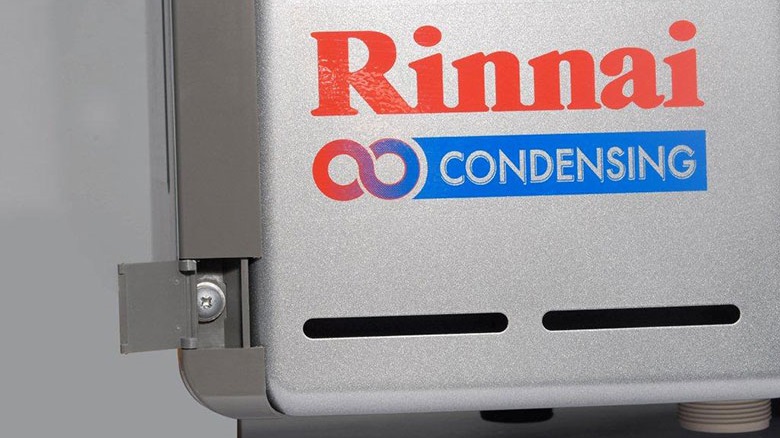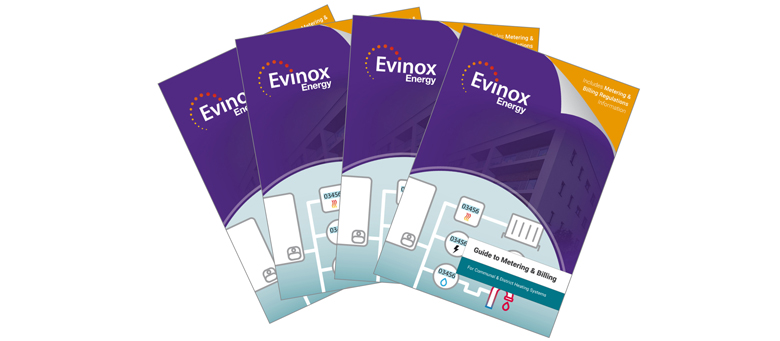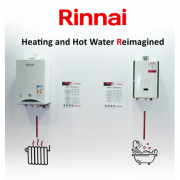Hybrid hot water solution tops the green bill
Rinnai’s Chris Goggin explains why hybrid technology is an attractive option for reliable and cost effective hot water provision as it becomes abundantly clear that renewables, on their own, just aren’t delivering.
Energy efficient continuous flow condensing gas fired water heaters clearly have their part to play as we head into ‘greener’ country. This ‘tankless’ form of hot water delivery is growing in popularity and offers huge ongoing financial benefits to building owners and tenants even before the advanced energy saving technologies of the units themselves are taken into account.
This makes the argument for their inclusion as a component in a hybrid renewables/gas boosted hot water system even more compelling. It is becoming abundantly clear that there is not one single method to achieve energy efficiencies as renewables on their own just aren’t delivering. There is no point in waiting for the perfect renewable solution to come along we can utilise a very effective mix of existing renewables and traditional technologies.
In effect we need to find ways of using current renewables technology, be it solar thermal, solar PV or heat pump technology, in a practical manner maximised by traditional fuel sources – in this instance, gas, whether Natural or LPG.
Modern renewables-ready heavy-duty condensing water heater units guarantee the highest efficiencies and therefore the lowest running costs of any commercial water heater. In short, a HE unit used as a gas booster for solar or ASHP systems maximises solar gain, as it only consumes energy when more hot water than the panels can cope with is needed. The rest of the time the unit is inactive.
The use of evacuated tube or flat plate solar collectors can make a big difference when paired with condensing continuous flow water heaters as a boost. Doesn’t it make sense to store the free energy collected by an array of solar panels within in a solar thermal store which can be heated to the required temperature on demand by a gas fired water heater or the water to the outlet can be easily boosted, taking advantage of the expansive range of modulation associated with Rinnai technology.
A gas fired continuous flow water heater is also the only booster that ensures never-ending hot water – no matter how fierce the demand. Fossil fuel is only used when the renewable store is below its set-point, thus reducing the dependency on fossil fuel and reducing CO2 emissions.
Easily ‘retro-fitable’ with current renewable technology, these units are a better environmental option than an electric booster. By using gas, a direct energy source, you can significantly reduce greenhouse gases.
Renewables ready Rinnai Infinity condensing HDC1200 internal and external models show an impressive energy performance of 107 per cent net efficiency while the larger Rinnai HDC1500 models turn in 105 per cent net efficiency*.
For large commercial, operations Rinnai has just launched the Infinity HDC1600i, its premium condensing water heater which has been tested to below 20 ppm NOx, producing the lowest emissions on the market, with 107 per cent gross efficiencies*.
Infinity HDC 1600 renewables-ready, retro-fitable low NOx series is the first heater of its kind to utilise pre-mix burner technology. The newly developed down-firing burner allows increased efficiency and reduces NOx gases. The patented burner also reduces the possibility of flame lift, which has previously been a problem with premix down firing burners. It has a 13-1 turn down ratio – the largest on the market – of 58.4kw-4.5kw and is ultra quiet in operation – so quiet that you wouldn’t know it was on unless you glance at the number on the display.
The Infinity 1600i low NOx series is available with an output of 58.4 kW producing 16.2 litres of temperature controlled hot water per minute (or 9.73 per hour) raised at 50°C. That is .2 litres a minute more than the existing Rinnai Infinity 1500 HDC.
*Tested and certificated by Technigas to EN 26.
For more details on RINNAI products visit www.rinnaiuk.com.















